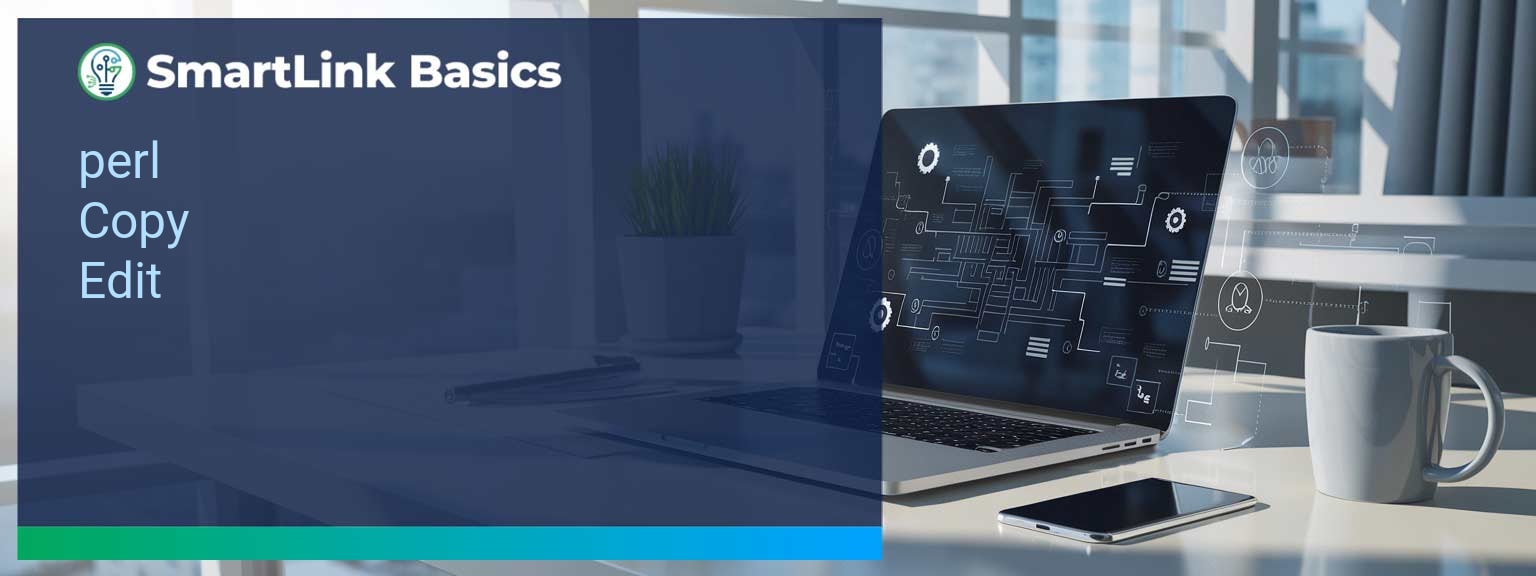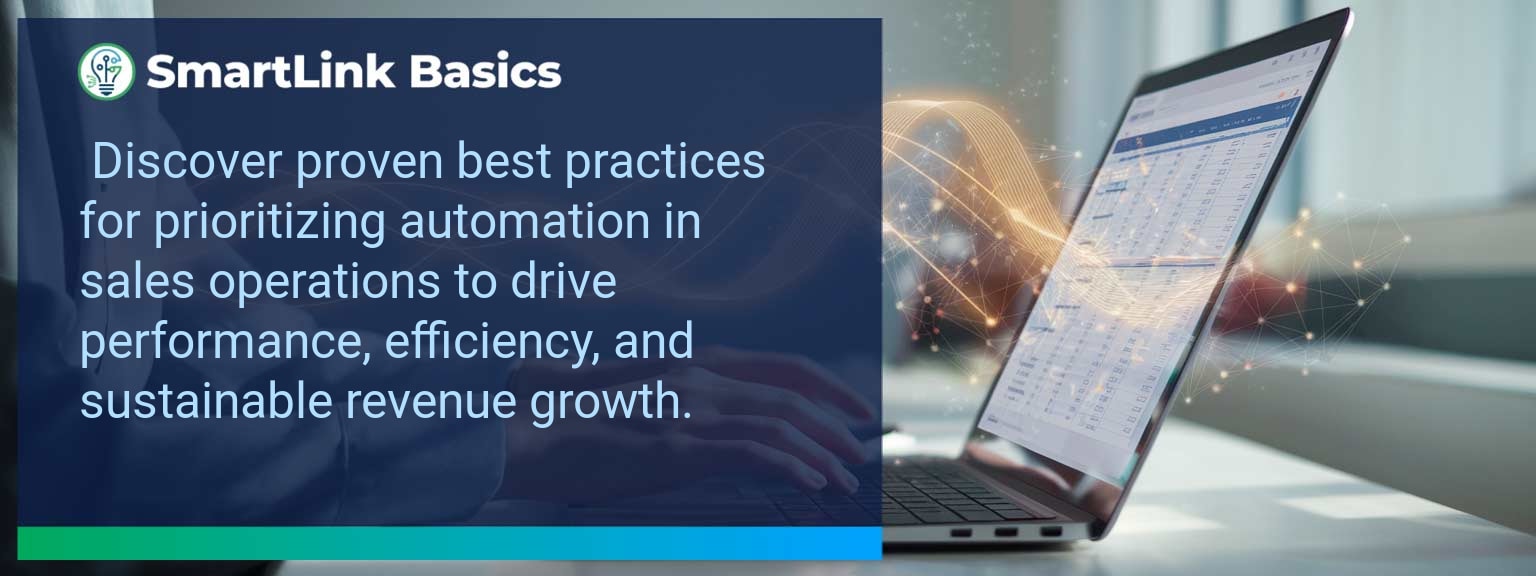Industry data shows that organizations adopting AI-driven automation achieve cost reductions of up to 30% while accelerating sales cycles by 20% or more (McKinsey, 2024). For sales leaders, AI automated workflows now define competitive advantage, enabling teams to reallocate time from repetitive tasks to high-value engagements. At SmartLink Basics, we help decision-makers implement these systems strategically, ensuring they integrate with existing revenue operations. In this article, you’ll see how AI automated workflows power business outcomes, the common obstacles that slow adoption, and practical steps to optimize processes. You’ll walk away with proven examples, a 90-day action blueprint, and measurable KPIs to track results.
- Automate repetitive administrative and CRM updates with AI.
- Integrate machine learning to personalize outreach at scale.
- Streamline approvals, quotes, and contract workflows for speed.
- Use predictive analytics to prioritize sales opportunities.
- Track adoption and performance with targeted metrics.
AI Automated Workflows: What Changed and Why It Matters
AI adoption has shifted from experimental to operational, making automated workflows a standard in high-performing sales organizations. The real advantage lies in combining workflow automation with artificial intelligence workflows to optimize every step of the revenue process. Sales leaders now use AI to synchronize touchpoints, reduce manual inputs, and ensure faster execution. For example, a B2B SaaS leader introduced automated lead enrichment and routing, cutting qualification time by 60%. Actionable insight: Audit processes for time-intensive handoffs and apply AI where repeatability is high.Redesign the Revenue Operating System With AI Automated Workflows
ICP, Segmentation, and Targeting AI-enabled segmentation uses historical wins, firmographic, and behavioral data to dynamically update ICP profiles. This ensures targeting precision without quarterly re-work. Pipeline Architecture Automated workflows push opportunities through the right stages based on engagement signals. AI flags at-risk deals for intervention. Plays and Messaging Integrated automation tools deliver personalized sequences based on buyer activity, increasing relevance at every touchpoint. Operating Cadence AI schedules follow-ups, forecast calls, and account reviews based on actual pipeline movement rather than static calendars. Actionable insight: Implement automation that adapts in real-time to both internal and buyer-driven events.Common Obstacles To Achieving Seamless Automation
The most frequent challenges are fragmented systems, inconsistent data quality, and cultural resistance. Without a unified data layer, automation amplifies errors rather than solving them. Coca-Cola Europacific Partners reported needing a full data governance upgrade before AI could improve sales workflows. Leaders must first assess infrastructure readiness and train teams to trust AI-influenced recommendations. Actionable insight: Before deployment, establish clean data practices and a single source of truth.Implementing AI To Optimize Workflows
Effective deployment of AI process optimization starts with mapping current-state processes, identifying friction points, and matching them with automation tools. For example, automating proposal generation based on CRM opportunity data can reduce turnaround from three days to one hour. Solutions combining business process automation platforms with machine learning integration enable continuous performance improvement. Actionable insight: Pilot in one high-impact stage, measure, and then expand.Tangible Benefits From Automated Processes
The benefits extend beyond time savings — sales leaders gain a scalable system. Tangible outcomes include faster quote-to-close, higher lead conversion, and better forecast accuracy. A manufacturing firm implemented AI-assisted order processing and cut errors by 40%, improving on-time delivery rates. Actionable insight: Track both speed and accuracy to measure workflow automation effectiveness.Metrics That Matter
| Category | Metric | Definition | Target |
|---|---|---|---|
| Leading | Workflow Completion Rate | % of automated sequences executed without manual intervention | 95%+ |
| Leading | AI Suggestion Adoption Rate | % of AI-generated action recommendations executed by reps | 80%+ |
| Lagging | Cycle Time Reduction | Decrease in time from lead entry to closed-won | 20%+ |
| Lagging | Revenue Per Rep | Average sales revenue generated per sales rep per quarter | +15% YoY |
| Quality | Automation Error Rate | % of workflows that trigger incorrect outcomes | <1% |
| Quality | Customer Satisfaction Post-Automation | Average CSAT score after automation implementation | ≥ 4.5/5 |
Innovations And Next Steps For AI Automation
Emerging capabilities like AI-generated playbooks, intent-driven dynamic routing, and integrated AR for virtual product demos are shaping the next wave of sales automation. Companies integrating these tools early will outpace competitors in speed and personalization. Actionable insight: Stay ahead by testing emerging automation features quarterly and aligning them with evolving buyer expectations.Get the 90-day plan, coaching rubric, and dashboard template to operationalize AI in your enablement program.
Turning AI Automation Into a Revenue Multiplier
AI automated workflows are now a strategic lever for predictable, scalable growth. This guide outlined current applications, adoption challenges, a 90-day execution plan, and measurable success criteria. To make automation pay off, sales leaders should integrate tools into one cohesive operating system and review results monthly for continuous improvement. Access more AI-driven sales enablement resources from SmartLink Basics to design a high-performance automation strategy. Strong sales leadership strategies determine whether a sales organization sustains growth or stalls in competitive markets. SmartLink Basics has worked with sales leaders who understand that high performance comes from precision planning, clear accountability, and an operating system that drives consistent outcomes. The challenge is not the number of tools available, but how effectively leaders align these tools with people and processes. This article outlines proven frameworks for identifying growth barriers, applying leadership techniques that deliver measurable results, and building a sales culture that endures. By applying these strategies, sales team management becomes more focused, resources are optimized, and sales performance improvement becomes predictable rather than reactive.- Define clear sales leadership priorities based on measurable business outcomes.
- Identify barriers in pipeline velocity, conversion ratios, and account growth potential.
- Implement structured sales coaching techniques tied to individual KPIs.
- Use an operating cadence that reinforces process discipline and rapid decision-making.
- Invest in a sustainable sales culture that retains top performers.
Identifying Barriers To Sales Growth
Sales leaders often encounter growth stalls caused by unclear market segmentation, inconsistent pipeline management, and ineffective messaging. Each barrier magnifies inefficiencies across the team. Poorly defined Ideal Customer Profiles (ICPs) lead to wasted time on low-value opportunities, while a lack of process discipline results in unpredictable revenue. For example, a mid-market software company saw a 27% drop in quarterly growth when their segmentation failed to reflect updated industry shifts. Actionable insight: Diagnose bottlenecks with data from win-loss analysis, forecast accuracy reports, and activity-to-revenue ratios. This creates a factual foundation for change.Implementing Proven Leadership Approaches
Effective sales leadership relies on structure, clarity, and accountability. This includes aligning the team around shared goals, providing consistent coaching, and controlling the flow of information between market intelligence and sales execution. Leaders who manage through data-backed sales performance improvement can direct resources where they drive the most impact. Consider a regional distribution firm that increased conversion rates by 15% after implementing a weekly coaching cadence paired with real-time deal reviews. Actionable insight: Deploy leadership skills in sales that are supported by frameworks, not intuition—ensuring every decision reinforces revenue objectives.Achieving Measurable Performance Gains
Sales leaders must define and track the right combination of leading, lagging, and quality metrics to validate progress. Without a measurement system, success becomes anecdotal. Example: A SaaS provider tracked opportunity aging, first-meeting-to-proposal ratios, and customer lifetime value, improving forecast accuracy from 62% to 87%. Actionable insight: Focus on metrics tied to both activity and commercial impact, ensuring they are visible to the entire team.| Category | Metric | Definition | Target |
|---|---|---|---|
| Leading | Opportunities Created | New qualified deals entered into CRM per rep | 5+ per month |
| Lagging | Closed-Won Revenue | Total booked revenue per quarter | $2M per quarter |
| Quality | Proposal Win Rate | Percentage of proposals converting to closed-won | >45% |
Building A Sustainable Sales Culture
High-performing sales teams are not built through temporary incentives alone. They thrive in environments where recognition, professional development, and shared accountability are embedded. A sustainable culture supports consistent sales process optimization and motivates sales teams through both challenges and rapid growth phases. Example: A manufacturing distributor reduced turnover by 23% after creating structured mentorship programs and peer-led win reviews. Actionable insight: Design a culture plan that includes onboarding excellence, recognition rhythms, and leadership visibility in daily sales activities.Get the 90-day plan, coaching rubric, and dashboard template to operationalize AI in your enablement program.








